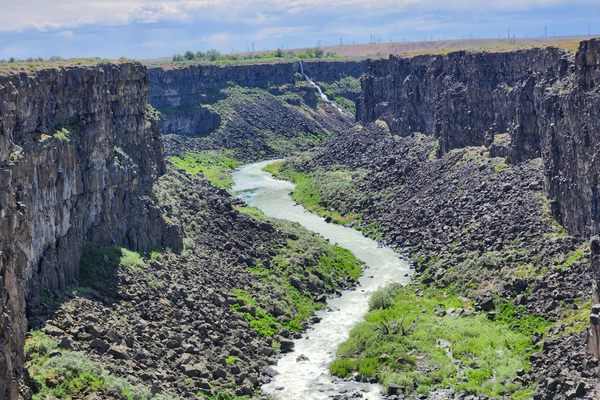Silver Falls State Park
Multiple waterfalls and several historic CCC buildings anchor this state park in Oregon's Willamette Valley.
At around 8,700 acres, Silver Falls State Park is the largest state park in Oregon. It contains some 15 waterfalls centered around an attractive forested canyon with a large network of hiking trails. The falls flow over hard basalt ledges that are now often overhanging, as the underlying softer sandstone has been eroded away behind the falls.
In several cases, the hiking trail actually runs behind the falls. The basalt flows are part of the Columbia River Basalt sequence, which resulted from enormous eruptions in eastern Washington and Oregon about 15 million years ago. Some of the eruptions were so large they spilled down the Columbia River Gorge to the Pacific, and backed up into the Willamette Valley.
The area was recognized for its scenic value in the early 20th century, which was outstanding even with the extensive logging that had occurred around then. At the height of the Great Depression, in 1935, President Roosevelt designated the site as a Recreational Demonstration Area, and extensive recreational infrastructure was built by the Civilian Conservation Corps (CCC). Many buildings from that era have now been designated as National Historic Sites, and the CCC’s legacy also lives on in the extensive set of hiking trails, many of which date from the 1930s. In addition, nearly a century after logging ceased the forest has largely regrown.
Know Before You Go
The park is traversed by Oregon State Route 214, which comes in from the west outside Salem and heads north to Silverton. The park also contains a couple of campgrounds. Check the website for camping charges, as well as general information on parking and entrance fees.
Most falls can be seen from the Trail of 10 Falls, which extends some 7.2 miles with about 800 feet of elevation change. Large parts are unpaved and its difficulty is rated as moderate.
The park is very popular locally in the summer, especially on sunny weekends, and parking is likely to be a problem then. There is wide seasonal variation in the water flow, however, with the falls often having dwindled to a trickle in late summer. The falls are typically much more spectacular early in the spring with the higher water flows. The park is also much less crowded at that time of year, which compensates for the more typically gray weather.








































Follow us on Twitter to get the latest on the world's hidden wonders.
Like us on Facebook to get the latest on the world's hidden wonders.
Follow us on Twitter Like us on Facebook